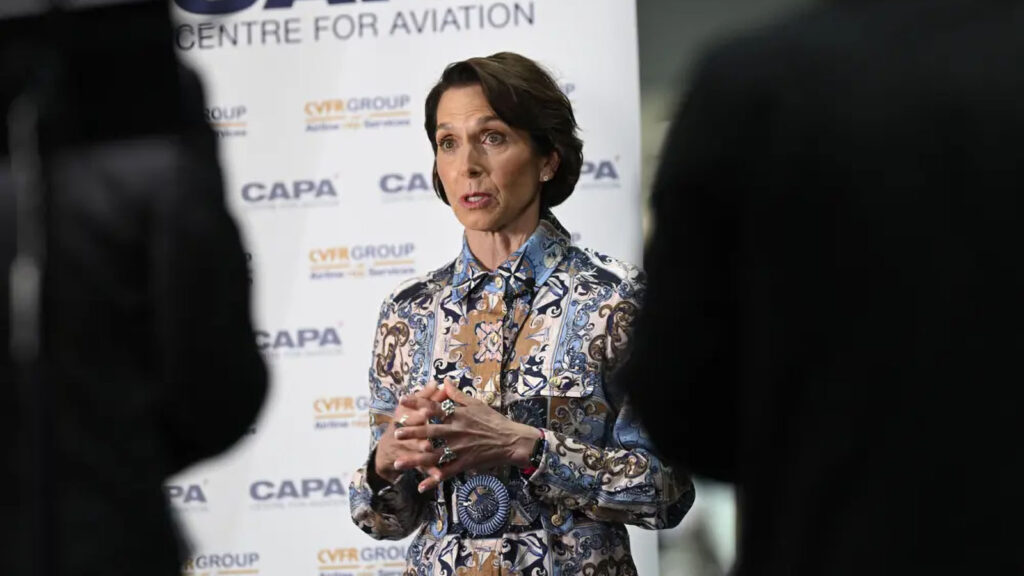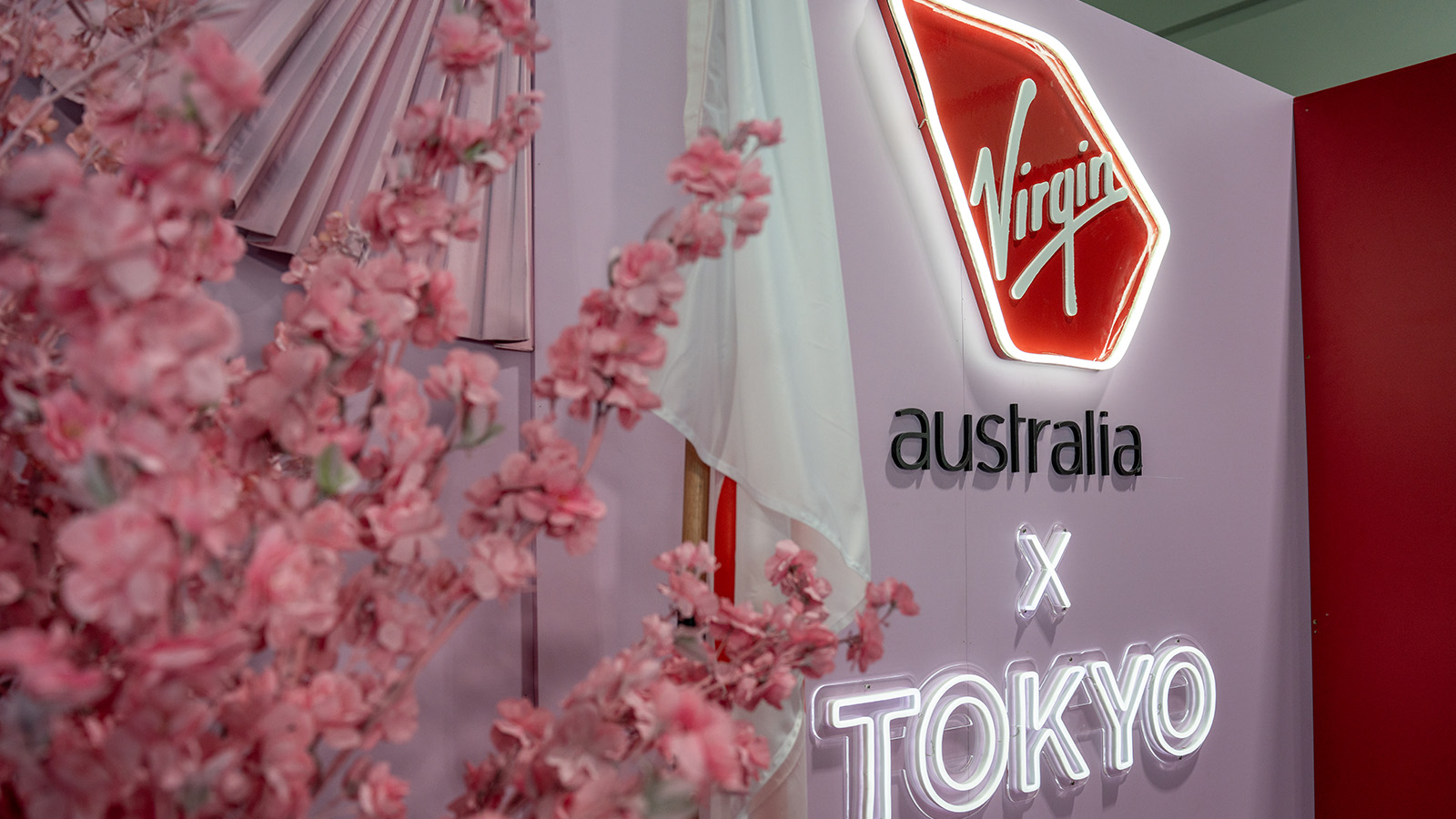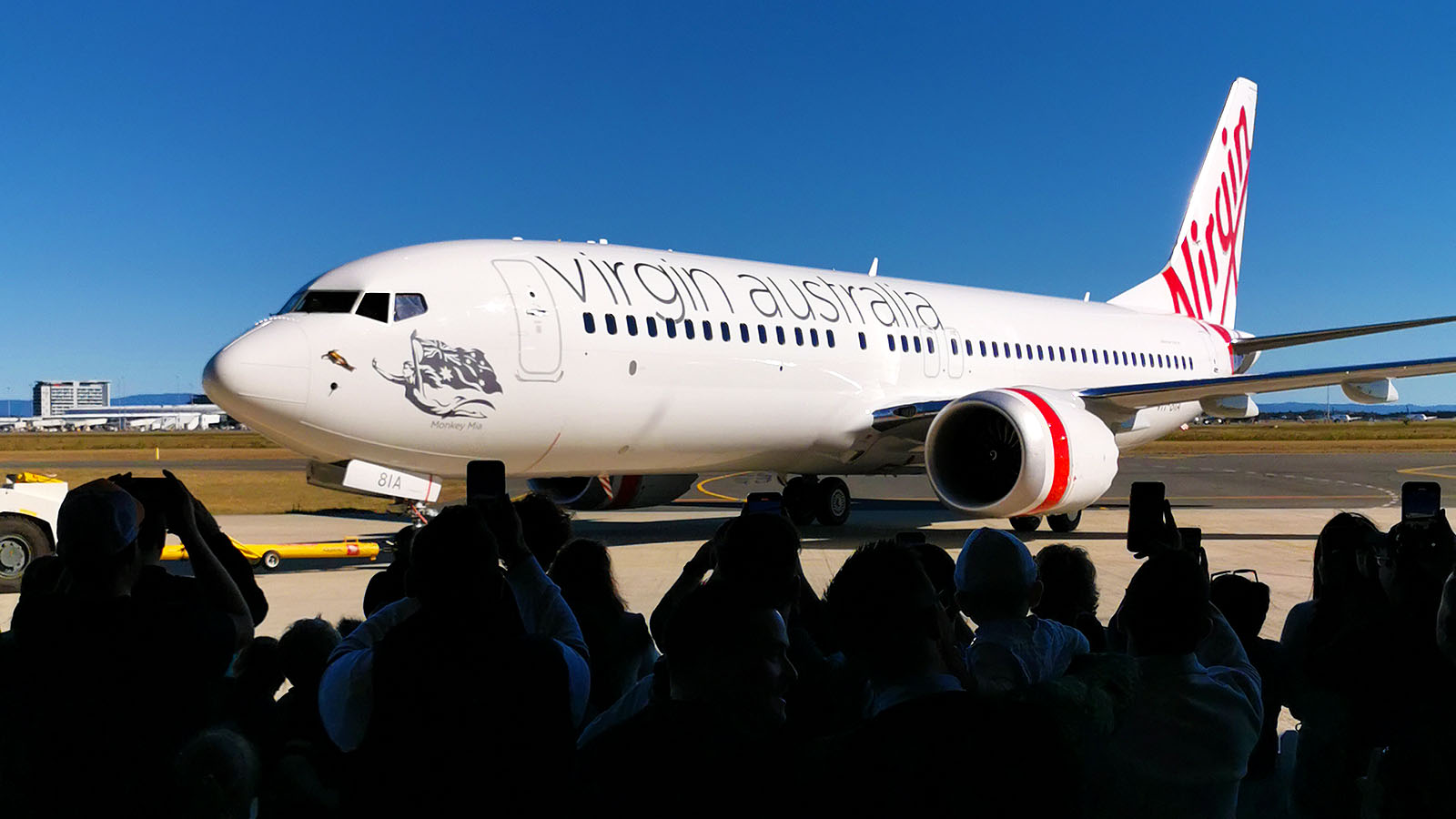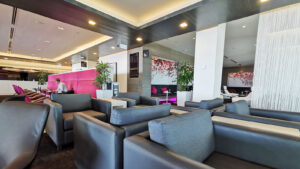Virgin Australia CEO Jayne Hrdlicka talks airline strategy, Haneda and Qatar
"We were trying to be something that we could never successfully be," says the Virgin boss.

What we'll be covering
The last several years have been particularly busy for Virgin Australia. Not only did the airline make tracks through voluntary administration, but it’s also undergone a step change in strategy. It’s no longer playing in the ‘premium’ space – instead, taking more of a mid-market approach under the leadership of CEO Jayne Hrdlicka.
This means Virgin Australia is less of a direct competitor to the likes of Qantas compared to pre-pandemic. No doubt, the airlines still go toe-to-toe in a number of ways. But these days, Virgin Australia has no long-haul operations of its own – and for that matter, no international lounges of its own, either.
Most passengers are charged for inflight Wi-Fi, soft drinks come at a price and the free snacks in Economy are gone. Fast-track security for eligible travellers at the country’s largest airports is also limited to periods of just five hours per day, five days per week. But it’s all part of the airline’s strategy, centred around being incredibly cost-conscious.
Virgin Australia CEO Jayne Hrdlicka speaks at the CAPA Airline Leader Summit in Brisbane to share more.
Hrdlicka reflects on Virgin Australia’s overall strategy
It’s fair to acknowledge that Virgin Australia’s latest approach to flying won’t be a fit for everybody. Especially so for those who previously saw Virgin as a direct, premium competitor to Qantas. But Hrdlicka shares that the airline’s former strategy just wasn’t making sense on paper.
‘We were trying to be something that we could never successfully be, which is the world’s most premium airline based in Australia,’ Hrdlicka reflects. Speaking to the structure prior to voluntary administration and her subsequent appointment as CEO, ‘we were so complicated that fleet complexity – the operational complexity that brought – just magnified our costs.’
Virgin Australia ultimately retired all widebody jets from its fleet. This brought an end to all long-haul operations, including all flights to Los Angeles. The planned Brisbane-Tokyo route, set to have begun in March 2020, would also never take wing.
‘We’d lost our away, (with) over $2 billion in losses and $4 billion in debt on the balance sheet prior to COVID hitting,’ Hrdlicka continues. So, ‘we started with three big goals in mind for Virgin Australia. The first was to rebuild it top to bottom as a value carrier.’
‘We’ve done diligence on the market and done consumer research to figure out what’s the right place for Virgin Australia to play,’ she shares. ‘We just found that right spot for the marketplace. So starting with the clarity on where we would play and then with the clear mindset that we needed to rebuild every part of the airline to get the cost structure right, and the customer experience right, to sit as a value carrier successfully for the future.’
‘Goal two was to ensure that when we got through all that transformation, which we’re still in the midst of, that we would be delivering very attractive financial returns for our industry. And then the third goal was to do all that building around our amazing culture and our amazing people. That would be the centrepiece of our strategy, because that had been the centrepiece of why our most loyal customers came back to Virgin Australia.’
Hrdlicka on flying the airline out of administration and through COVID
Virgin Australia wasn’t just trying to redevelop its brand after exiting administration. The airline also had to navigate the complexities of the country’s strict domestic and international borders. As needs no reminding, the policies around who could travel – and where they could travel – were ever-changing and rather unpredictable.
Hrdlicka says that rebuilding the airline ‘during COVID was both easy and incredibly difficult. Because, of course, we were running an airline during borders up and down and borders up and down. For the airports and for the airlines, that was pretty hard and stressful. But we were also taking everything apart and putting it back together again while that was happening.’
‘The good news is that travellers never saw any of the heavy lifting that was going on behind the scenes, because there weren’t that many opportunities to travel. Most of that period was really essential workers travelling across borders to serve the community.’
‘So I look back and I think, gee, that was super hard. It was incredibly intense, but also just really rewarding.’
Hrdlicka on Haneda
While Virgin Australia never began flying Brisbane-Tokyo as planned, it still added Japan to its route map. This was achieved by launching Boeing 737 services between Cairns and Tokyo’s Haneda Airport. It was one of the only ways that Virgin Australia could retain its prized slot at Haneda Airport, originally procured for that Brisbane route.
However, Virgin Australia’s overall approach to Tokyo was somewhat unconventional. On these lengthy flights from Cairns, travellers in Economy wouldn’t have any seatback TVs to watch. There’d be no complimentary food – and almost all drinks were chargeable. In effect, the Economy service on the lengthy Cairns-Tokyo jaunt would mirror what travellers get on a short Sydney-Melbourne hop. Add to that, the absence of airport lounges at both ends of the journey for eligible travellers.

‘I think for all of us in our businesses and in our personal lives and our careers, you learn the most from the most difficult experiences,’ Hrdlicka says. ‘You learn the most from the failures. And as an airline, we’ve learned a tonne about what didn’t work over the course of the last 23 years of our business. And, really, the 20 years prior to going into administration.’
There are ‘a couple of themes in there. One was (that) we got ourselves into things (where) we could never compete successfully, and we could never make money. And we were flying to places that we just didn’t have enough scale from a network standpoint to be able to compete.’
‘I think we’ve learned a lot. We will not repeat the same mistakes of the past. I’m sure we’ll make other mistakes, but they’ll be smaller ones and we’re testing and learning every day.’
But about Japan, specifically?
‘As a team, we pride ourselves on making good, fact-based decisions. But also, watching how those decisions are playing out,’ Hrdlicka continues. ‘If we’ve done something that doesn’t work as well as we thought it would, then we can fix it. And Haneda is one of those examples.’
‘We really expected the Japanese tourism economy to come back much faster than it has. Our Haneda flying depended upon inbound Japanese tourism as well as outbound in tourism from Australia to Japan. And the Japan into Australia bit just isn’t back yet.’
‘We’re not going to hang onto a route for longer than we can see the profit. We’ll adjust our network, because we just don’t want to be in a position where we’re spending a lot of money on the hope of tomorrow, when tomorrow may never come.’
Speaking about those Boeing 737s…
Without widebody aircraft adding to Virgin Australia’s cost base, the airline is focused squarely on narrowbody flying. For the most part, that centres around the Boeing 737 NG and the Boeing 737 MAX.
Virgin Australia has a sizeable order of Boeing 737 MAX jets on the way, on top of those already featuring in the fleet. When all deliveries are complete, the carrier will count 39 MAX jets among its ranks. This total was to include 25 of the largest MAX variant: the Boeing 737 MAX 10, also known as the Boeing 737-10. However, given that the Boeing 737 MAX 10 remains yet to be certified by the FAA, a change was needed.
‘We’ve converted 12 (Boeing 737 MAX) 10s to (Boeing 737 MAX) 8s,’ Hrdlicka confirms. This is ‘to ensure that we’ve got a stable pipeline of aircraft coming into our business. We have eight (Boeing 737 MAX) 8s today. They’re performing so well for us. They’re so fuel efficient, quiet, and just very good performance.’
‘We’ve got another six coming in the next 12 months or so. And then we’ve got another 12 that we’ve just converted. Then we’ve got options for more 10s down the track. So we’re doing the best job we can.’

As previously reported, Virgin Australia is also taking over the leases of several Boeing 737s from the Rex fleet. ‘We’re picking up a handful of the Rex aircraft that haven’t yet left the country,’ Hrdlicka confirms. This will ‘help give us more degrees of flexibility as we adjust with Boeing’s needs to manage the challenges that both Boeing and Airbus are facing with respect to giving their supply chains back to balance.’
International partners, including Qatar Airways
There’s been a lot of talk lately (among other circles, we might add!) around Qatar Airways potentially taking a stake in Virgin Australia. However, Hrdlicka is quick to dampen those expectations. ‘There’s been a lot of creative fiction written, I’ll just say that,’ says the Virgin boss.
‘But our partners are absolutely essential to us. And we have the world’s best partners, United Airlines, Air Canada, Singapore Airlines, Qatar, ANA, Hawaiian. We are working every day to deepen those relationships, strengthen the experience we provide to our customers and do a better job selling together to business customers.’
(Notably, Hrdlicka doesn’t mention Etihad Airways, another partner of Virgin Australia and Velocity. Such omissions appear to have become the norm since Virgin’s partnership with Qatar Airways took effect).
‘It’s not lost on Virgin Australia that to compete effectively domestically, we actually have to be in a position where we can compete internationally for our customers. Anybody who’s flying frequently domestically also has international needs. We have to be able to provide an experience for them which rivals the competition.’
‘Our international partners are more important to us than any of our competitors, because we don’t have a long-haul international business ourselves. And so, we depend on our partners in that strategic relationship. Working together every day to lift the bar, and what great looks like for our guests. So it’s really important to us to make sure that we’re strategic and we’re continuing to build on that.’
Baggage tracking and sustainability
Virgin Australia was the first domestic carrier to roll out scan-based baggage tracking for passengers. It’s not at the detail of an Apple AirTag, but it provides more transparency as a bag makes its way through airport systems. Even so, it’s not a new concept. Many carriers overseas have been making this information available to travellers for years.
‘We don’t have the scale to be on the bleeding edge of anything,’ Hrdlicka recognises. ‘But we do have great partners who do have that scale. And so we’re working with them to understand what they think about the next generation of technology for customers and for people, and for driving productivity in the business.’
When asked about sustainability and the broader use of sustainable aviation fuel (SAF), Hrdlicka has some thoughts. ‘It would be a very dark day, I think, if we evolved as an industry to a place where we started. Which is (where) aviation was only available for those who had the means to do something very expensive.’
‘It’s changed the world, people being able to travel the world. And so I don’t think we want to go backwards. So it’s incumbent upon all of us to ensure that there is enough scale and focus on finding ways to decarbonise that also don’t drive up massive inflation in the industry, that puts (airfare) pricing out of reach of everyday people.’
Hrdlicka resigned as Virgin Australia CEO earlier this year but remains in the role for now while the airline and its majority owner, Bain Capital, seek a replacement.
Also read: Virgin Australia gets green light for Air New Zealand partnership
Featured image courtesy of CAPA. Chris Chamberlin attended the CAPA Airline Leader Summit in Brisbane as a guest of CAPA Centre for Aviation.
Stay up to date with the latest news, reviews and guides by subscribing to Point Hacks’ email newsletter.






It’s terrible that they do not offer it.
Google how/why two Boeing whistle-blowers ended up 6 feet under (RIP).